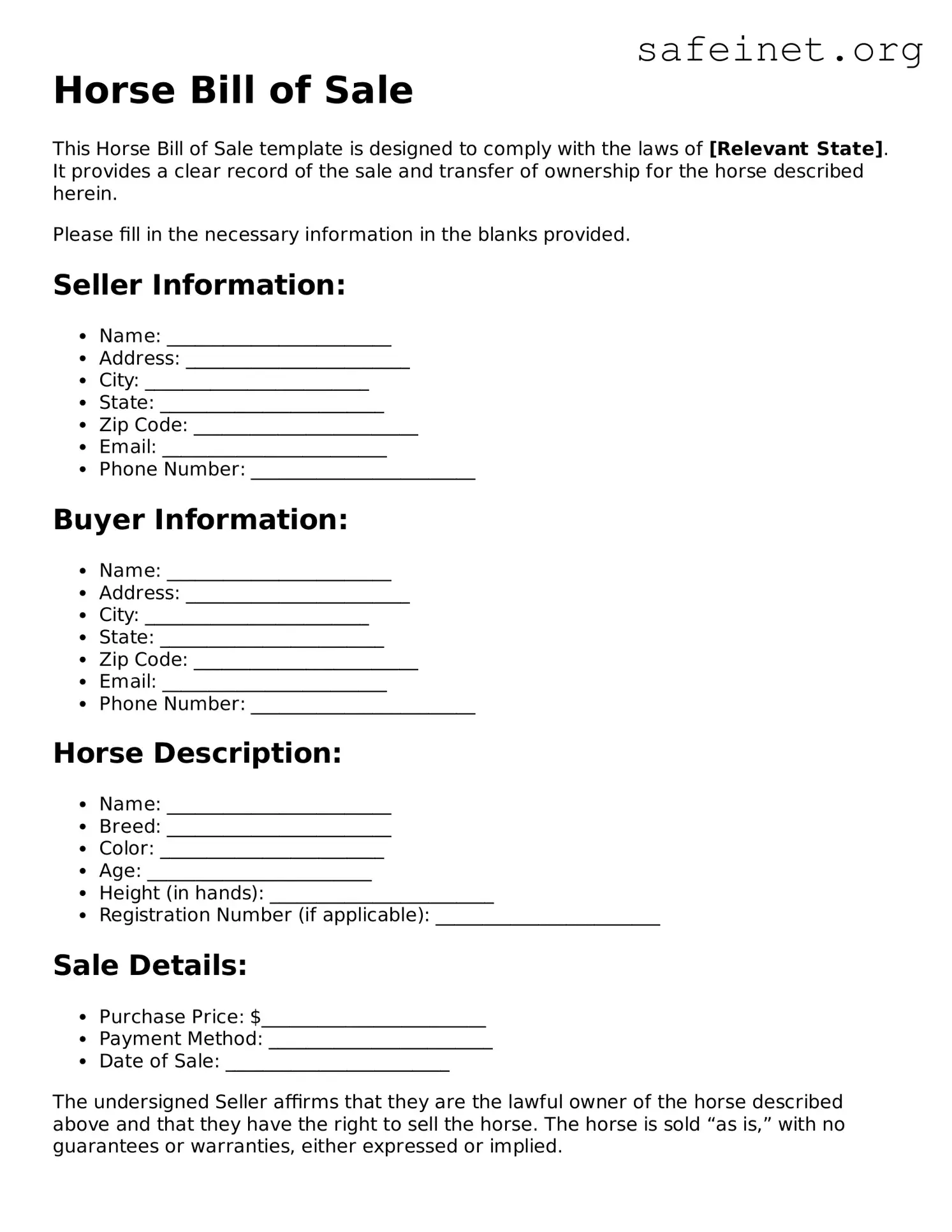What is a Horse Bill of Sale form?
A Horse Bill of Sale form is a legal document that records the transaction of buying or selling a horse. It serves as proof of the sale, detailing information about the horse, the buyer, the seller, and the terms of the sale. This form helps to protect both parties involved in the transaction and ensures that ownership is officially transferred.
Why is a Horse Bill of Sale important?
This document is crucial for several reasons. Firstly, it provides a clear record of the sale, which can be important for legal purposes. If any disputes arise later regarding ownership or conditions of the sale, the Bill of Sale can be used as evidence. Secondly, it may be required for registration purposes with breed associations or competitions, helping to establish the new ownership of the horse.
What information should be included in a Horse Bill of Sale?
Typically, the form should include several key pieces of information. This includes the names and addresses of both the buyer and seller, a detailed description of the horse (such as color, breed, age, and any identification numbers), the sale price, and any terms or conditions about the sale. It's also advisable to include the date of the transaction for reference.
Do I need a Horse Bill of Sale if I am giving a horse as a gift?
While not strictly necessary, having a Bill of Sale for a gifted horse is still a good practice. Even if there is no money involved, a written record of the transaction helps clarify ownership and can prevent future misunderstandings. It also makes it easier to track the horse’s history in case of eventual registration with associations.
Can a Horse Bill of Sale be modified after it's signed?
Once all parties have signed a Horse Bill of Sale, the terms are generally considered final. If changes are needed after signing, it's best to create a new document that reflects the updated terms. Both buyer and seller should sign this new form to maintain clarity regarding the agreement.
Is a Horse Bill of Sale legally binding?
Yes, a Horse Bill of Sale is legally binding, as long as it includes all necessary components like the identification of the parties, description of the horse, and agreed-upon terms of sale. However, it’s important that both parties approach the transaction in good faith, as fraud or misrepresentation can impact the enforceability of the agreement.
Do I need a witness or notary when signing a Horse Bill of Sale?
While not always required, having a witness or a notary present at the signing can provide extra validation and security for the transaction. This additional step can be beneficial, especially for high-value horses or when dealing with unknown parties. It adds an extra layer of documentation that can assist in future disputes.
Where can I obtain a Horse Bill of Sale form?
You can find a Horse Bill of Sale form from various sources, including online templates, livestock associations, or legal document services. Many local veterinarians or equine businesses may also provide them. Just ensure that the form you choose adheres to your state's legal requirements to ensure its effectiveness.
